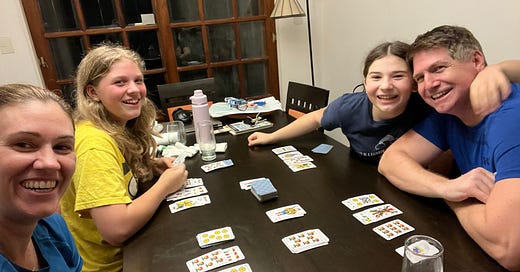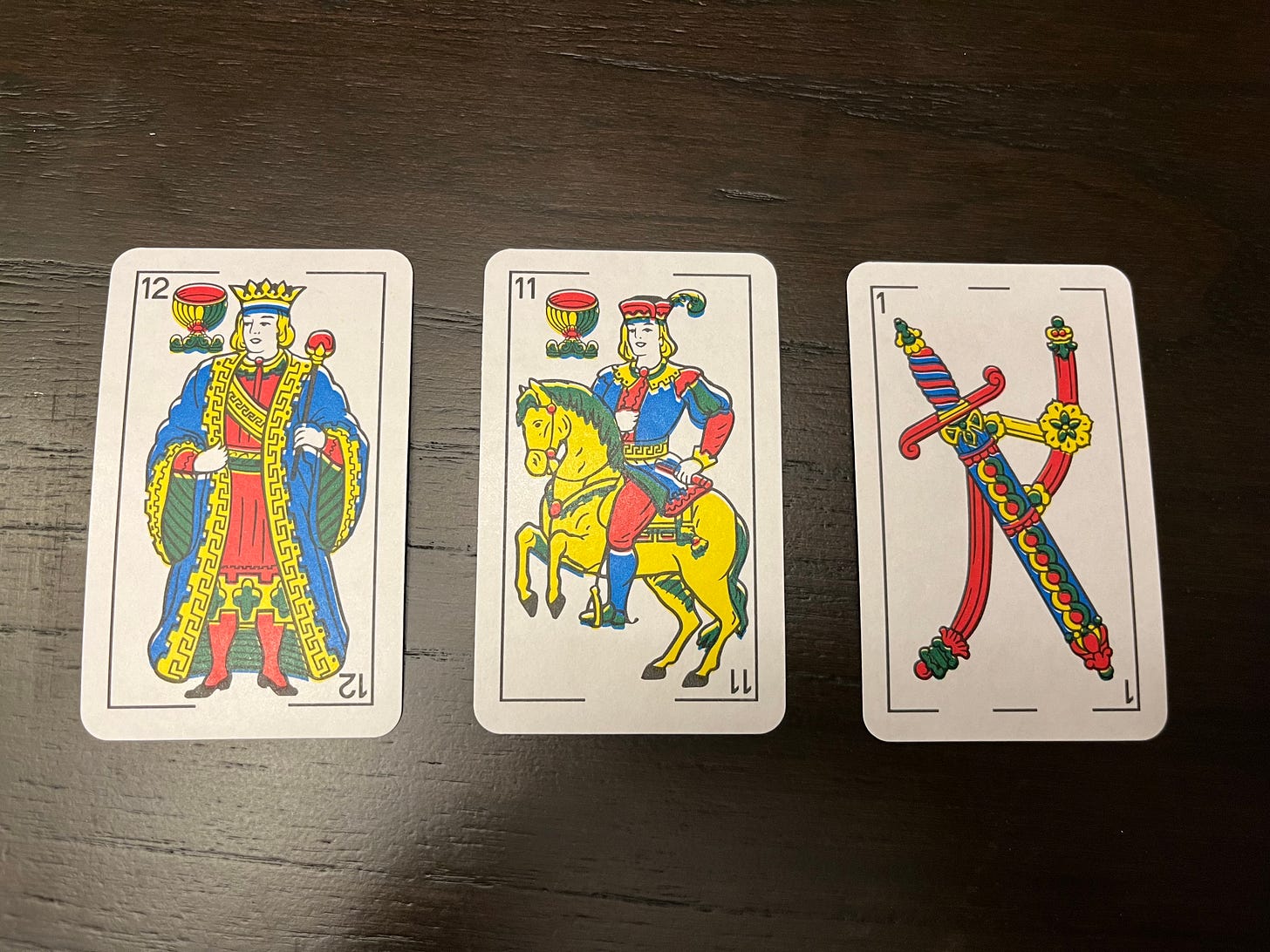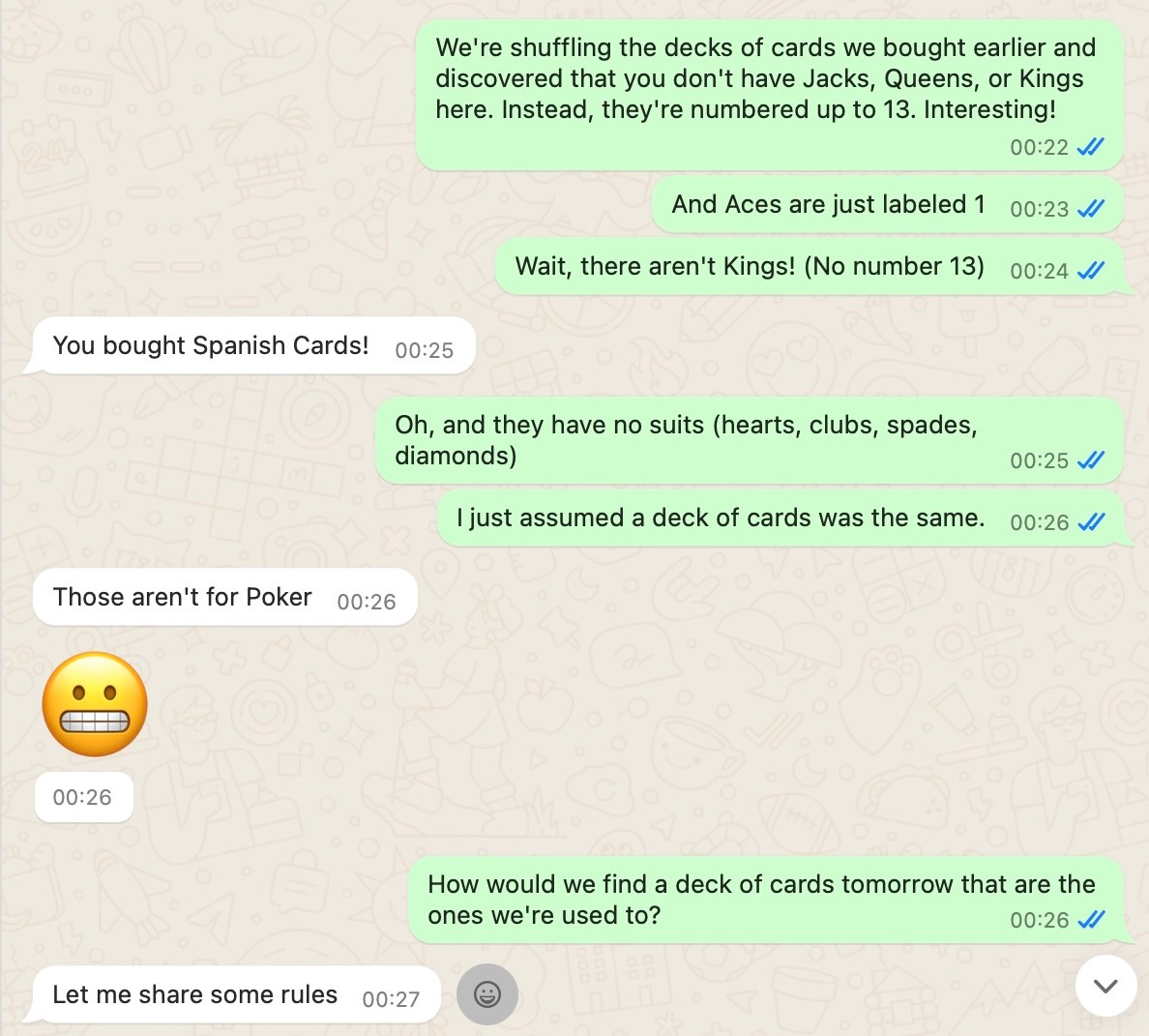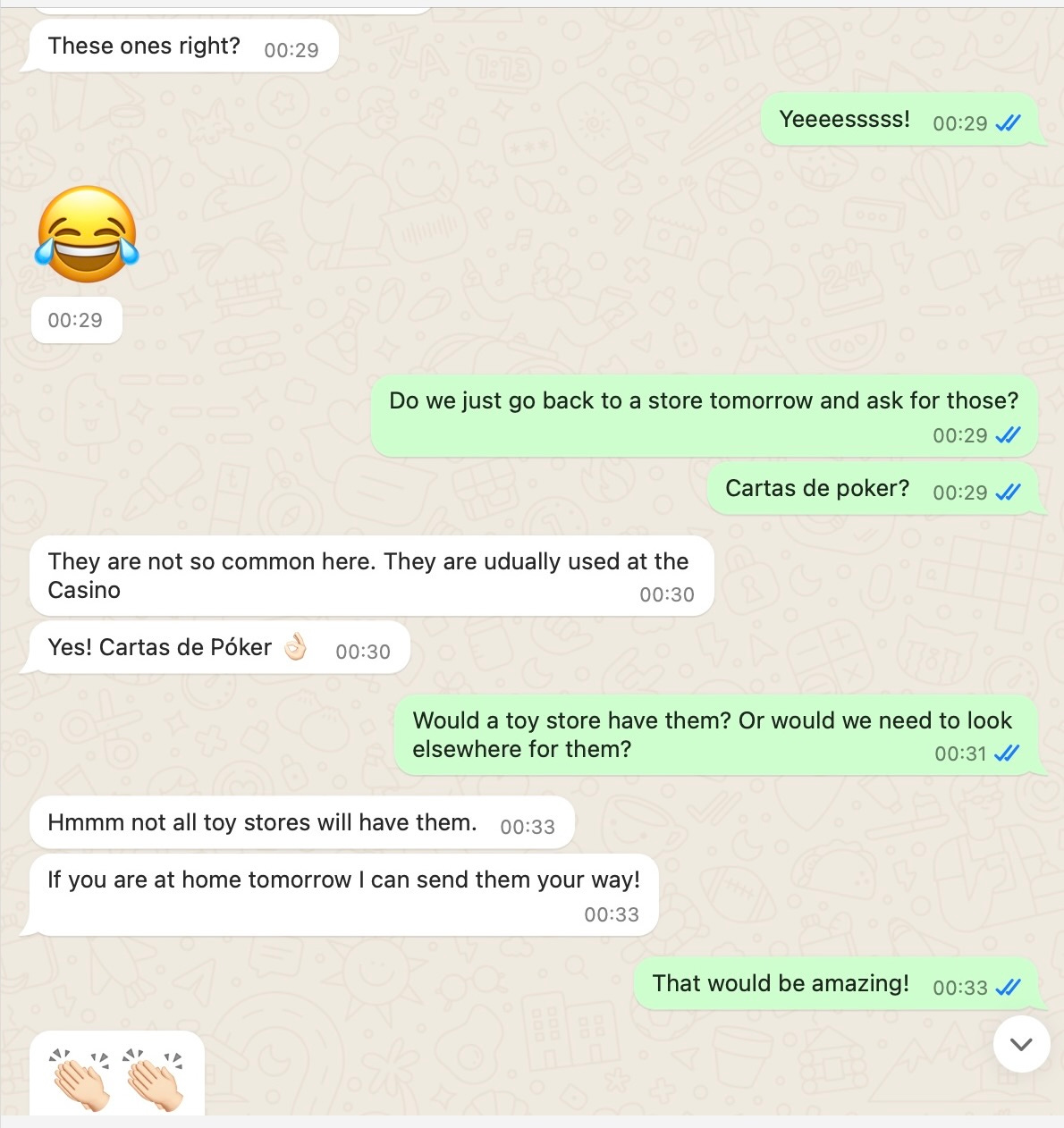We experienced a lot of rain when we were in Buenos Aires. That plus the mosquitoes meant we needed to find indoor activities. So we bought several decks of cards to play games at our first AirBNB. Only it wasn’t simple to buy them and they weren’t quite what we were expecting…
In the US, you can easily pick up a deck of cards at a convenience store (e.g., 7-Eleven), grocery store (e.g., Safeway, Publix), or a big pharmacy chain like CVS or Target. Of course, you can also order them on Amazon. Well, in Buenos Aires, many items are sold at specific types of shops. Want an umbrella? You’ll need a marroquinería (basically, a leather goods/luggage store). And for a deck of cards, you’ll need a toy store or a stationery store. How would you know this? Well, you need an inside friend like Estefi because otherwise it’s a bit of a scavenger hunt. 😉
Fortunately, there was a stationery store not far from us, so I walked down, asked for four decks of cards, handed over my pesos (the topic of cash deserves a whole post of its own), and headed “home,” feeling accomplished.
Then we opened the cards:
What the what?! We laughed SO hard. I messaged Estefi:
I didn’t even know a deck of cards could be something other than poker cards. I had never heard of Spanish cards! And why did some of them look like weird clubs (think: Flinstones) with eyes on them?

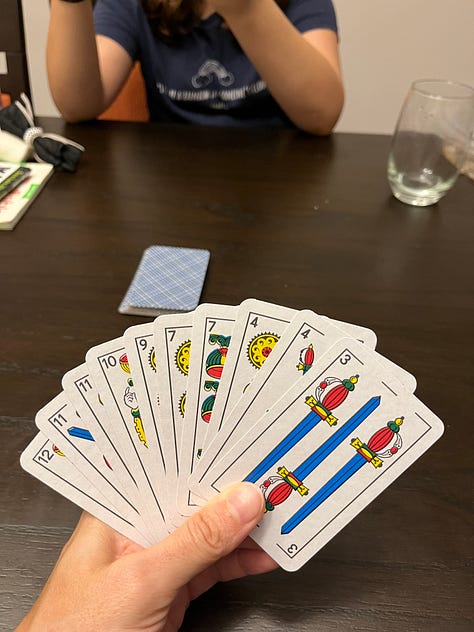
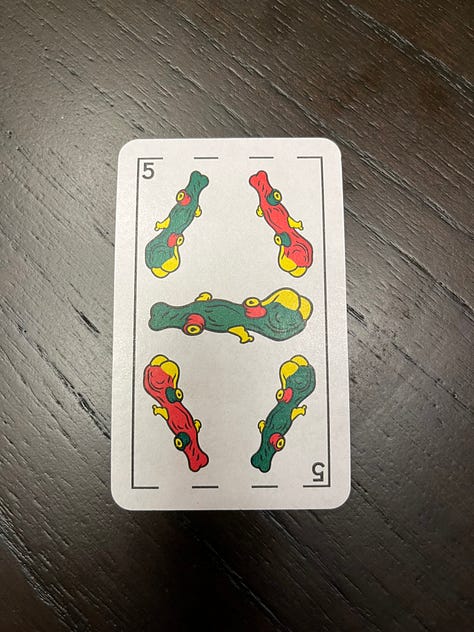
Suffice it to say this blew our minds. We managed to figure out how to play Spite & Malice and Gin Rummy with them but the variations on the suits and the different drawings were a source of curiosity and laughter. (I wish we still had these decks, but they got lost of left behind somewhere in our travels.)
If you are as new to Spanish playing cards as we were, here are some interesting differences:
There are 4 suits, but they’re unique: Oro (gold), Copas (cups/glasses), Espadas (swords) and Bastos (clubs). They supposedly reflect medieval social classes: Oro for nobility, Copas for clergy, Espadas for the military, and Bastos for peasants.
There are no Queens due to superstitions around the number 13. Instead, there are often three “court cards” per suit: Sota (Jack), Caballo (Knight), and Rey (King).
Traditionally, Spanish decks only have 40 or 48 cards, omitting 8s and or 9s. But it's become typical to find 54-card decks, so people can play card games beyond traditional Spanish ones.
Estefi later had a regular poker deck delivered to us, which she ordered from MercadoLibre, Argentina’s version of Amazon or eBay. We tried opening our own ML account since we were going to be in country for over a month and it would’ve been so convenient, but it turns out you have to have a DNI (national registration number) to do that. Oh well!
The memory of our first game night in BsAs will likely not be forgotten for some time to come. And it was just one of so many experiences we had while traveling around the world where we were called to rethink our (often unconscious) assumptions. In this case: a) playing cards are widely available (and affordable) and b) playing cards are the same everywhere.
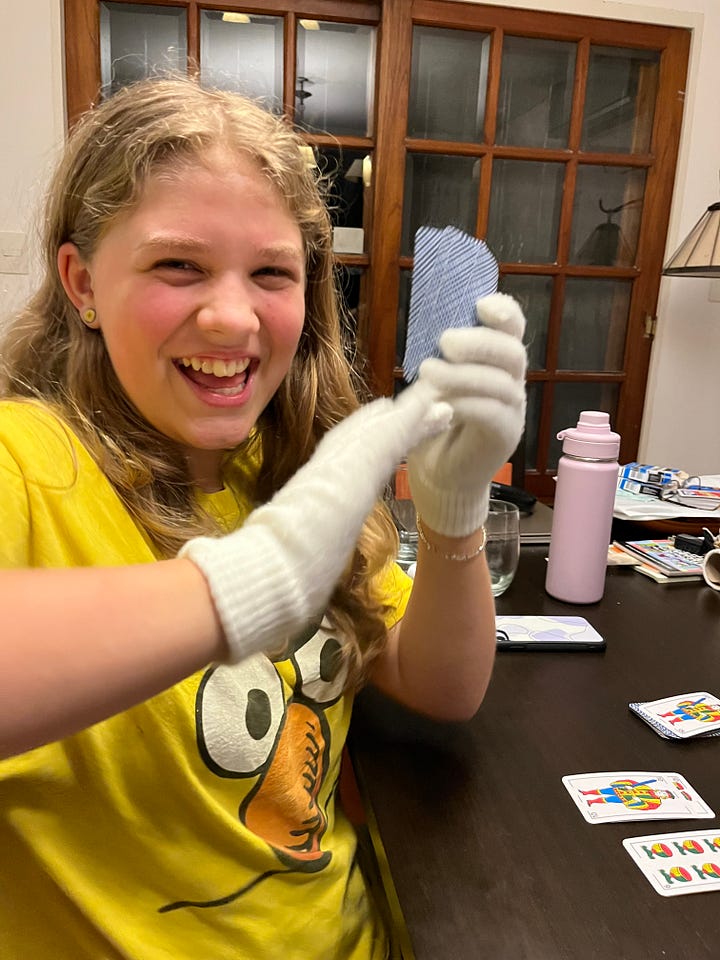
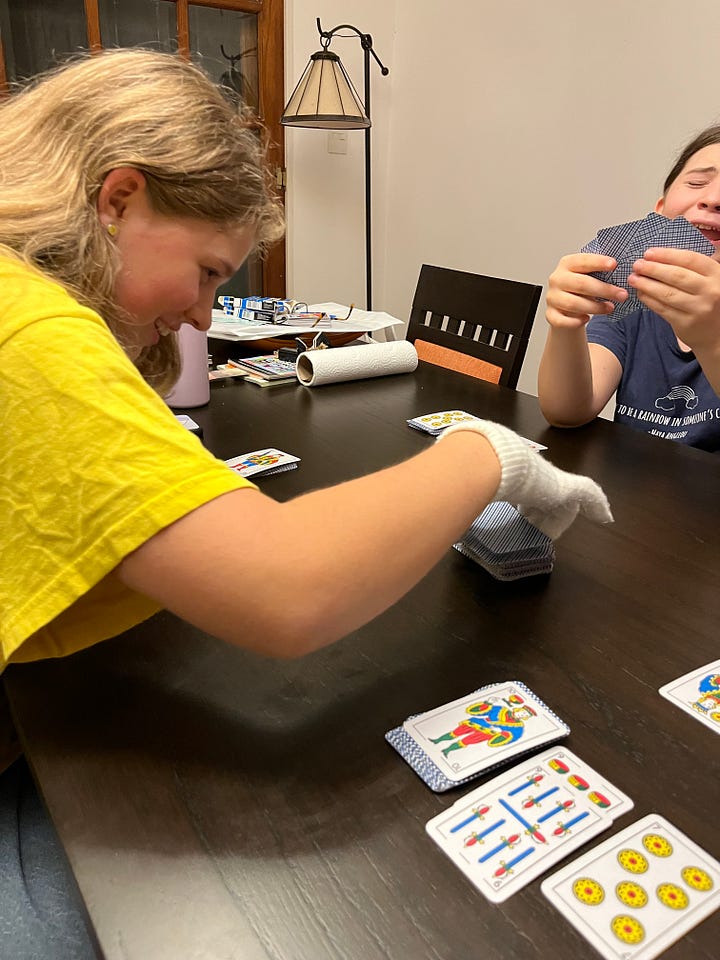
Have you ever seen or even played with a Spanish deck of cards? Did you know this was a thing? What’s an (unconscious) assumption you’ve faced, funny or otherwise?

